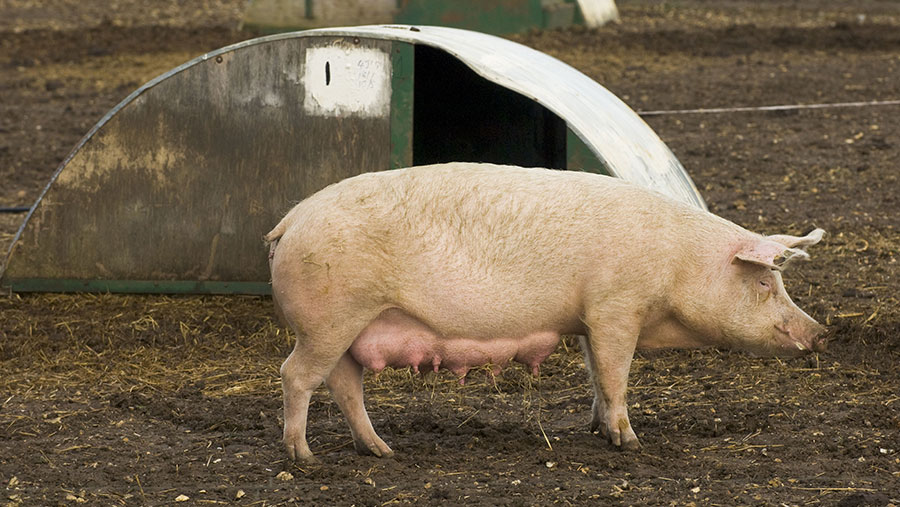Pig units facing huge bill to comply with emission laws
 © Design Pics Inc/REX/Shutterstock
© Design Pics Inc/REX/Shutterstock Large-scale pig businesses could be facing costs totalling thousands of pounds to comply with tougher new emission rules, the AHDB warns.
Pig farms with more than 2,000 finishers or 750 sow placings are required to hold an environmental permit which is reviewed every four years.
But changes to emission regulations mean all permit holders will be facing a bigger task this time to ensure their units comply with updated regulations.
See also: Q&A: How new environmental pig permits could affect you
AHDB’s head of environment and buildings, Nigel Penlington, said the main change is the introduction of Best Available Technique Associated Emission Levels (BAT AELs).
The AELs for ammonia emissions and nitrogen and phosphorus excretion will apply to all permits, Mr Penlington said.
Emissions
Problems may occur because a farm’s emissions are calculated using a standard formula based on historical performance figures for growth rates and food conversion ratios.
“Our concern is that the data being used in the formula was collected during the 1990s. Since then genetics and performance have improved enormously and emissions per pig have fallen.
“When our modern units are reviewed using the formula it may mean that some larger farms do not meet the emission requirement,” said Mr Penlington.
Reviews will be administered by the Environment Agency (EA), which will assess units for their ability to provide different ration formulations for the pigs as they grow.
This is necessary because the pig’s protein and energy needs change as it develops. A diet that does not meet that changing need can push up emissions.
Large investment
“Units must, therefore, be able to demonstrate that they can feed more than one ration. And that may mean a large investment for new feed bins, hoppers and feed lines,” Mr Penlington reckoned.
He estimated the cost of supplying the feed line would be £15/sow or more than £11,000 for a 750-sow unit.
Other permit checks will look at slurry containment, paper audit trails for elements such as staff training and accident contingency plans.
“The EA will be sending questionnaires to all permitted farms this autumn to determine whether existing permits comply with the new standards and identify what, if any, improvements are required,” Mr Penlington said.
“Farms with a permit, or those applying for one, will need to comply with requirements as soon as the new/updated permit is issued,” he warned.

